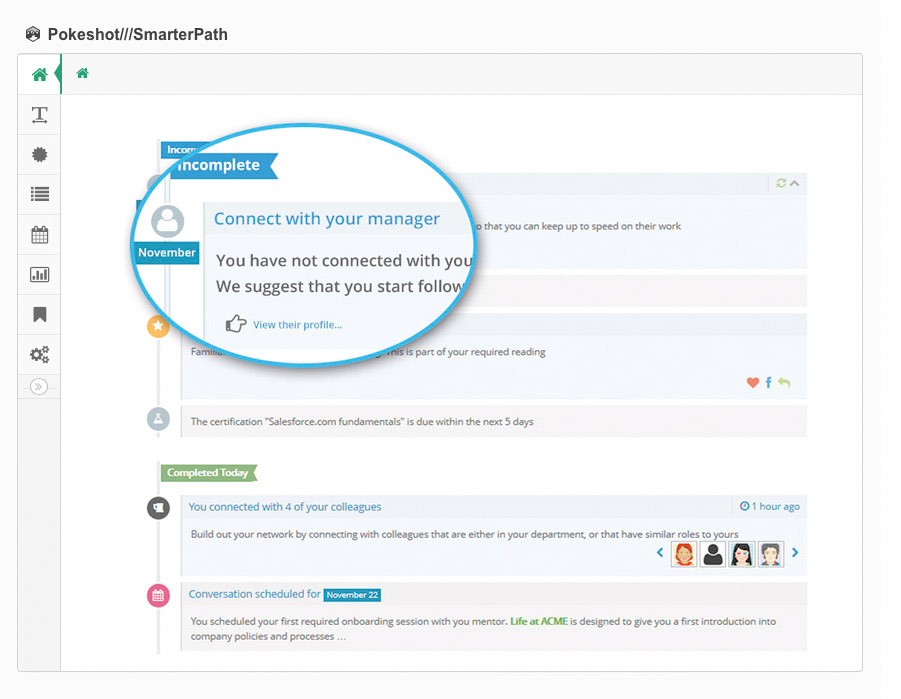
Most companies now realize that onboarding is an essential aspect in developing a relationship with new employees and ensuring their effective integration into the organization. So this blog article doesn’t focus on why this topic is important for companies, but rather on what the onboarding process involves, what tools can provide support, and how to integrate it into your staff development and digital social learning strategy.
Onboarding is more than just a list of key information
Companies should first put some thought into what incoming employees should actually learn. This is often limited to basic information of the company’s inner workings, for example: “Where can I get coffee? How does the scheduling tool work? Where is the nearest restroom? These matters are important, but should be supplemented with social and professional components, for example: Who are my colleagues? How do my colleagues collaborate? What specialized topics will I be addressing? Whom can I exchange information and views?

T-E-S components
It would be difficult to provide answers to all of these questions without the right kind of support. Modern social collaboration solutions like Jive or Office365 offer employees ways to network and share knowledge with colleagues. But there’s more to effective onboarding than having new employees sit at their computers and open a software program. Companies should instead take employees by the hand and guide them along a path, for example: Who are your colleagues? Who should you network with? Where do you find which information? (see Figure 1). This puts traditional, process-oriented onboarding tasks (where can I get coffee?) side by side with tool-based, social onboarding tasks (who are my colleagues?). All of these elements should be incorporated into a so-called digital social learning strategy. When answering the “how” question, it doesn’t make sense to view the various learning components separately. A mix of traditional and modern, electronic components should be used:
- T: Traditional learning components (offline, in the classroom)
- E: E-learning components (tutorials, videos, e.g. fire safety instructions)
- S: Social learning components (communities)
This combination of components can be called a T-E-S components mix. The latter consists of the use of social collaboration elements such as a learning community. Companies thus ensure that employees, from the first day on, not only learn key information about the company but are also encouraged to share knowledge and network with other employees (thus fostering the community idea). A well-thought-out onboarding process is characterized by a balanced mix of T-E-S components. Companies should also keep in mind another important facet of social learning – learning from learners. When new employees enter the company, they bring valuable experience with them that can help the company. Plus, they will notice when processes are not functioning optimally. Companies should capture and utilize this knowledge. Incorporating this facet into your digital social learning strategy makes perfect sense for companies and employees alike.
Onboarding and digital social learning – a recap
- Onboarding should not be reduced to conveying key information, but should also include specialized topics and social elements.
- Onboarding should be firmly anchored in the staff development and digital social learning strategy.
- It’s important to integrate T-E-S components into this strategy.
- The strategy should also take into account the “learning from learners” process.
If you want to learn about Social Learning please visit our website: www.smartsociallearning.com
About the author:
